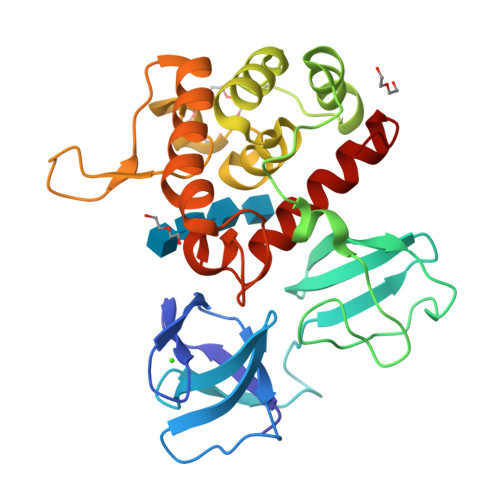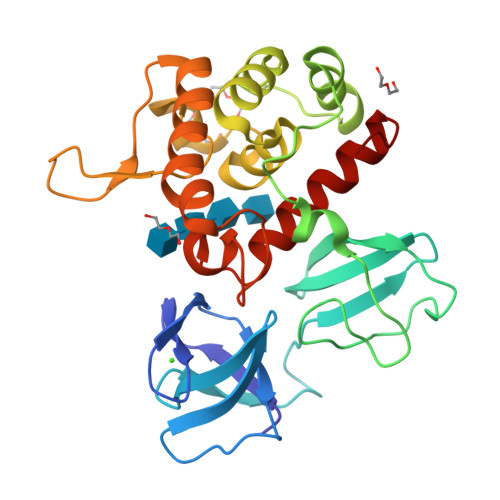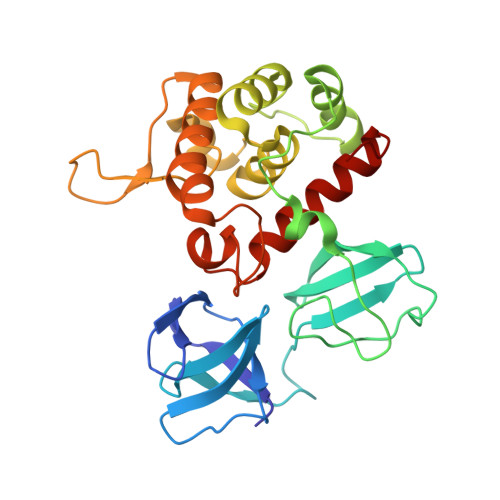Molecular basis of the final step of cell division in Streptococcus pneumoniae.
Martinez-Caballero, S., Freton, C., Molina, R., Bartual, S.G., Gueguen-Chaignon, V., Mercy, C., Gago, F., Mahasenan, K.V., Munoz, I.G., Lee, M., Hesek, D., Mobashery, S., Hermoso, J.A., Grangeasse, C.(2023) Cell Rep 42: 112756-112756
- PubMed: 37418323
- DOI: https://doi.org/10.1016/j.celrep.2023.112756
- Primary Citation of Related Structures:
7PJ3, 7PJ4, 7PJ5, 7PJ6, 7PL2, 7PL3, 7PL5, 7POD - PubMed Abstract:
Bacterial cell-wall hydrolases must be tightly regulated during bacterial cell division to prevent aberrant cell lysis and to allow final separation of viable daughter cells. In a multidisciplinary work, we disclose the molecular dialogue between the cell-wall hydrolase LytB, wall teichoic acids, and the eukaryotic-like protein kinase StkP in Streptococcus pneumoniae. After characterizing the peptidoglycan recognition mode by the catalytic domain of LytB, we further demonstrate that LytB possesses a modular organization allowing the specific binding to wall teichoic acids and to the protein kinase StkP. Structural and cellular studies notably reveal that the temporal and spatial localization of LytB is governed by the interaction between specific modules of LytB and the final PASTA domain of StkP. Our data collectively provide a comprehensive understanding of how LytB performs final separation of daughter cells and highlights the regulatory role of eukaryotic-like kinases on lytic machineries in the last step of cell division in streptococci.
Organizational Affiliation:
Department of Crystallography and Structural Biology, Instituto de Química-Física "Rocasolano," Consejo Superior de Investigaciones Científicas, Madrid, Spain.




















